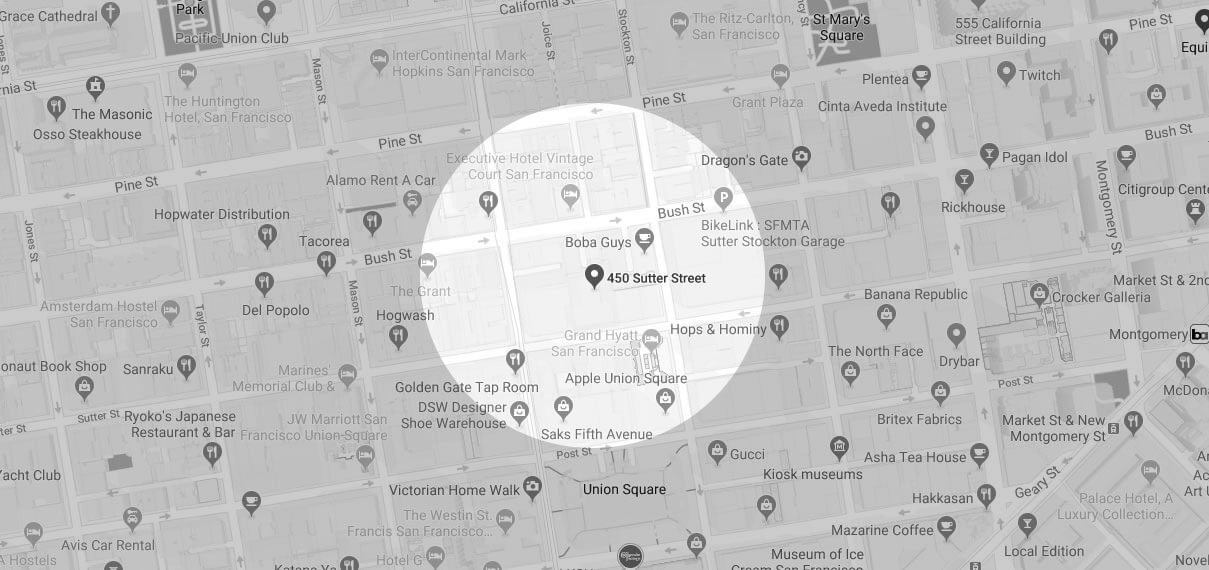By Dr. Maria Rodriguez, DDS, My Dentist San Francisco
As an experienced dentist at My Dentist San Francisco, I've encountered a myriad of orthodontic emergencies. These situations, while not life-threatening, can cause considerable discomfort and require immediate, informed action. My goal in writing this article is to provide a comprehensive guide on how to handle these emergencies effectively. Orthodontic emergencies can vary widely, from broken brackets to severe discomfort, and each requires a unique approach. My extensive experience in dealing with such situations allows me to offer specialized, in-depth advice that goes beyond basic knowledge.

In orthodontic emergencies, understanding the problem and knowing when to seek professional help is paramount. My practice prioritizes emergency care, ensuring patients get timely and appropriate treatment. The immediate response to an orthodontic emergency can significantly impact the treatment's outcome. As a professional, I believe in empowering my patients with the knowledge to differentiate between situations that can be temporarily managed at home and those requiring immediate dental intervention.
Handling orthodontic emergencies effectively is crucial not only for alleviating immediate discomfort but also for ensuring the long-term success of orthodontic treatments. Delay or inappropriate handling of such emergencies can lead to prolonged treatment times, increased costs, and potentially suboptimal outcomes. This article aims to provide detailed, actionable information to manage various orthodontic emergencies efficiently and effectively.
Recognizing when to contact your dentist or orthodontist is critical in managing these situations. Not all orthodontic issues require a rush to the clinic, but knowing the difference can save considerable discomfort and prevent further complications. This guide will cover the most common orthodontic emergencies, offering in-depth insight into each and providing practical tips for immediate care, thus ensuring the continuity and effectiveness of your treatment.
Common Orthodontic Emergencies
Broken Brackets
Broken brackets are among the most common orthodontic emergencies. They usually result from eating hard or sticky foods, facial trauma, or even from the normal stresses of orthodontic treatment. A broken bracket can cause discomfort, especially if it creates friction against the inner cheeks or lips. It's essential to assess the situation immediately: if the bracket remains partially attached to the wire, it might need to be repositioned gently. This repositioning should be done using a clean, soft instrument like a cotton swab. If the bracket is completely detached, it's crucial to save any pieces and contact your orthodontist for an urgent appointment.
Misaligned or Broken Wires
Misaligned or broken wires can be a source of significant discomfort in orthodontic emergencies. A protruding wire can irritate the mouth's soft tissues, leading to sores or ulcers. Immediate temporary measures include using a clean, blunt instrument like the back of a spoon or a pencil eraser to gently push the wire back into a less irritating position. Applying orthodontic wax over the protruding end can also provide temporary relief. However, these are just temporary solutions, and it's essential to visit your orthodontist for a permanent fix. Regular dental wax applications can help manage the situation until the wire is professionally adjusted or replaced.
Loose Bands or Spacers
Loose bands or spacers are another common issue in orthodontic treatment. Bands are typically metal rings attached to teeth, providing an anchor for braces, while spacers are small rubber rings or metal springs used to create space between teeth. If a band becomes loose, it can shift and cause discomfort or even pain. Similarly, a lost spacer can alter the spacing between teeth, affecting the overall treatment plan. Immediate action involves refraining from playing with the loose band or spacer with your tongue or fingers, as this could exacerbate the problem. It's crucial to contact your orthodontist for an appointment to reattach or replace the band or spacer. Until your visit, sticking to soft foods and avoiding sticky or hard foods can prevent further displacement.
Pain and Discomfort
Pain and discomfort are not uncommon in orthodontic treatments, especially following adjustments. However, severe or prolonged pain may indicate an underlying issue. Effective pain management starts with understanding the cause of the discomfort. Mild soreness can often be managed with over-the-counter pain relievers, but severe pain, especially if accompanied by swelling or other symptoms, warrants immediate professional attention. Home remedies like rinsing with warm salt water can help alleviate minor irritations. However, if the discomfort continues or worsens, it's crucial to seek professional advice to rule out more serious issues like infections or significant tissue damage.
Loose or Broken Appliances
Understanding the Impact
Loose or broken orthodontic appliances, such as retainers or expanders, can significantly impact your treatment progress. These appliances are designed to hold teeth in their new positions or gradually adjust the alignment, and any malfunction can hinder these objectives. If you notice a looseness or breakage in your appliance, it's essential to assess whether it's still functioning as intended. Even a slight alteration in its position can affect its effectiveness.
Immediate Response and Care
The initial response to a broken or loose appliance should be to secure any detached parts and avoid further damage. Be careful not to swallow any broken pieces. If the appliance is causing discomfort or injury to your mouth's soft tissues, cover any sharp edges with orthodontic wax. It's important to avoid any DIY repairs or adjustments, as improper handling can exacerbate the issue.
Professional Intervention
Loose or broken appliances typically require professional intervention for repair or replacement. Contact your orthodontist as soon as you notice the issue. They will provide specific instructions based on the type of appliance and the nature of the problem. In some cases, they may advise removing the appliance entirely until your appointment.
Preventive Measures
To prevent damage to orthodontic appliances, it's advisable to follow dietary guidelines provided by your orthodontist, like avoiding hard, sticky, or chewy foods. Regular maintenance checks and being mindful of the appliance's care can also reduce the risk of breakages.
Injuries to the Mouth and Gums
Recognizing Serious Injuries
Injuries to the mouth and gums can occur due to various reasons, such as sports accidents, falls, or biting down on hard objects. These injuries can be particularly concerning for individuals with orthodontic appliances, as they can exacerbate the damage. Symptoms like bleeding, severe pain, swelling, or visible cuts require immediate attention.
First Aid Measures
In the event of an injury, rinse your mouth with a mild saltwater solution to clean the area and reduce the risk of infection. Apply a cold compress externally to reduce swelling. If there is bleeding, gently apply pressure with a clean cloth or gauze. Avoid using topical medications or ointments without consulting your dentist.
Seeking Professional Care
For injuries involving significant bleeding, cuts to the gums, or damage to the teeth or orthodontic appliances, it's imperative to seek professional dental care immediately. These injuries can have long-term implications on your oral health and orthodontic treatment if not addressed promptly.
Preventive Strategies
To prevent injuries, especially for those engaged in sports or physical activities, wearing a mouthguard is highly recommended. Custom-fitted mouthguards offer the best protection without interfering with orthodontic appliances. Regular dental check-ups can also help identify potential risks and provide guidance on preventive care.
Managing Infections
Identifying Infections
Infections in the mouth, such as abscesses or periodontal issues, can be exacerbated by orthodontic appliances. Symptoms like persistent pain, swelling, fever, or pus discharge indicate a possible infection. Orthodontic appliances can sometimes harbor bacteria, leading to infections if oral hygiene is not meticulously maintained.
Immediate Steps for Management
If you suspect an infection, start with thorough oral hygiene practices, including brushing, flossing, and using an antiseptic mouthwash. However, these measures are not a substitute for professional care. Avoid applying any medication or home remedy directly to the infected area without dental advice.
Professional Dental Care
Infections often require professional dental treatment, which may include antibiotics or other specific interventions. Contact your dentist or orthodontist as soon as you notice signs of an infection. Delaying treatment can lead to more severe complications and affect your overall health.
Prevention and Oral Hygiene
Maintaining excellent oral hygiene is key to preventing infections during orthodontic treatment. Regular brushing and flossing, along with routine dental cleanings and check-ups, are essential. Be mindful of any changes in your oral health and address them promptly.
Oral Hygiene During Orthodontic Emergencies
Importance of Maintaining Oral Hygiene
Maintaining stringent oral hygiene is crucial, especially during orthodontic emergencies. Orthodontic appliances can trap food particles and promote bacterial growth, increasing the risk of dental problems like cavities and gum disease. During emergencies, it's vital to keep the mouth clean to prevent additional complications. This involves regular brushing, flossing, and using an antiseptic mouthwash to reduce the risk of infection and inflammation.
Adaptations in Oral Care Routine
In the case of a dental emergency, such as a broken wire or loose bracket, your regular oral care routine might need adaptation. Use a soft-bristled toothbrush to avoid further damage and be gentle around the affected area. If flossing around a loose or broken component is challenging, consider using a water flosser or an orthodontic floss threader to maintain gum health.
Professional Dental Cleaning
Professional dental cleaning becomes even more crucial during orthodontic treatment. Regular cleanings help remove plaque and tartar build-up that might be difficult to clean at home, especially around orthodontic appliances. If you’re experiencing an orthodontic emergency, inform your dental hygienist so they can adjust their cleaning techniques accordingly.
Products to Use
Using the right products can significantly aid in maintaining oral hygiene during orthodontic emergencies. Fluoride toothpaste and mouthwashes can help strengthen the teeth and prevent decay. Orthodontic wax can be used to cover sharp edges of broken appliances, reducing the risk of injuries to the soft tissues of the mouth.
Preventing Orthodontic Emergencies
Understanding the Causes
Preventing orthodontic emergencies starts with understanding their common causes. Many emergencies, like broken brackets and wires, often result from eating hard, sticky, or chewy foods. Facial injuries from sports or accidents can also lead to orthodontic emergencies. Being aware of these factors allows for proactive measures to avoid such situations.
Regular Orthodontic Check-ups
Regular check-ups with your orthodontist are crucial in preventing emergencies. These appointments allow for the timely identification and correction of potential issues before they become problematic. Your orthodontist can also adjust the braces or other appliances, ensuring they are functioning correctly and comfortably.
Protective Measures in Activities
For those engaged in sports or physical activities, wearing a mouthguard is a critical preventive measure. Custom-fitted mouthguards provide the best protection without hindering orthodontic treatment. Avoiding certain foods and habits, such as chewing on pens or biting nails, is also advisable.
Education and Awareness
Educating patients about the proper care and maintenance of orthodontic appliances is key in preventing emergencies. Understanding how to care for braces or other devices, and recognizing the signs of potential problems, can significantly reduce the incidence of orthodontic emergencies.
Emergency Care and Your Orthodontic Treatment Plan
Impact of Emergencies on Treatment Plan
Orthodontic emergencies can impact your treatment plan in various ways. Depending on the nature of the emergency, it could lead to a delay in your treatment or necessitate changes in your treatment strategy. For instance, a broken appliance might require a replacement, potentially altering the timeline of your orthodontic journey.
Communicating with Your Orthodontist
Effective communication with your orthodontist is essential in managing orthodontic emergencies. Informing them promptly about any issues allows for timely adjustments in your treatment plan. It’s also important to follow their guidance and advice closely to ensure the best outcomes.
Adjustments Post-Emergency
After an emergency, your orthodontist might need to make adjustments to your treatment plan. This could involve replacing broken components, changing the type of appliance, or even altering the overall treatment strategy. Understanding and cooperating with these adjustments is vital for the success of your treatment.
Monitoring Progress
Post-emergency, regular monitoring of your treatment progress is essential. This involves frequent check-ups with your orthodontist to ensure that your treatment is back on track and progressing as expected. Your orthodontist will guide you through these adjustments and help you understand their implications.
When to Seek Immediate Professional Help
Recognizing Serious Emergencies
While some orthodontic issues can be managed at home temporarily, there are situations where immediate professional help is necessary. These include severe pain, significant bleeding, large cuts or injuries to the mouth, and signs of infection like swelling, pus, or fever. In such cases, delaying professional care can lead to serious complications.
Accessing Emergency Dental Care
Knowing how to access emergency dental care is crucial. Most dental offices have provisions for handling emergencies, and it’s important to have your orthodontist’s contact information readily available. In cases of severe injuries or when you cannot reach your orthodontist, seeking care at an emergency dental clinic or hospital may be necessary.
Importance of Timely Intervention
Timely intervention in serious orthodontic emergencies is critical. It not only alleviates immediate pain and discomfort but also plays a significant role in the long-term outcome of your orthodontic treatment. Delays can lead to worsened conditions, increased treatment complexity, and in some cases, irreversible damage.
Preparing for Emergency Situations
Preparation is key in efficiently handling orthodontic emergencies. Keep a small dental first aid kit at home, including items like orthodontic wax, clean gauze, a small mirror, and saline solution. Having your orthodontist's emergency contact details and knowing the location of the nearest emergency dental clinic can also be invaluable in urgent situations.
Navigating Orthodontic Emergencies with Confidence
Understanding Your Role
As a patient undergoing orthodontic treatment, understanding your role in managing emergencies is crucial. Being informed about the types of emergencies that can occur, knowing basic first aid measures, and being aware of when to seek professional help are all vital aspects of this understanding. Equipping yourself with this knowledge allows you to navigate these unexpected situations with confidence and efficiency.
The Importance of Follow-Up Care
After any orthodontic emergency, follow-up care is essential. This ensures that your treatment is still on track and any issues arising from the emergency are addressed. Regular check-ups after an emergency are vital to assess the impact on your treatment and make any necessary adjustments.
Building a Partnership with Your Orthodontist
Effective management of orthodontic emergencies is a collaborative effort between you and your orthodontist. Building a strong partnership with your orthodontist, based on communication and trust, is crucial. Feel comfortable discussing any concerns or questions with them, as this will help in better managing your treatment and any potential emergencies.
Embracing the Journey
Orthodontic treatment in San Francisco is a journey that sometimes involves unexpected challenges. Embracing this journey, including the unforeseen emergencies, with a proactive and informed approach, can make the experience more manageable and ultimately successful. Remember, the goal of orthodontic treatment is not only to improve the aesthetics of your smile but also to enhance your overall dental health.
In summary, while orthodontic emergencies can be daunting, being prepared and knowledgeable about how to handle them can make a significant difference. As a dental professional, I advocate for patient education and empowerment as key elements in managing these situations. Remember, timely and appropriate action can greatly mitigate the impact of orthodontic emergencies, ensuring the continuity and success of your treatment. Stay informed, stay prepared, and maintain a strong partnership with your orthodontic care provider to navigate these emergencies effectively.



